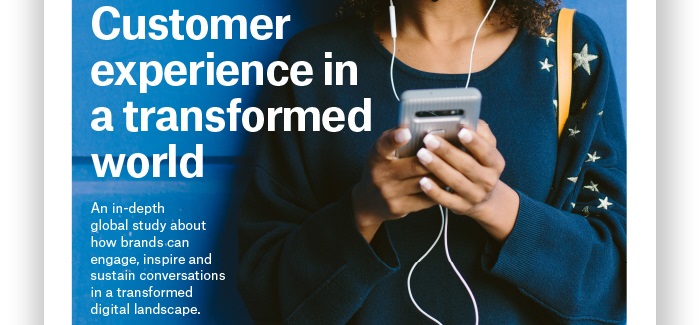STOCKHOLM and SEATTLE, Sept. 29 (Korea Bizwire) — A new global study, commissioned by Sinch (Sinch AB (publ) – XSTO: SINCH), finds COVID-19-induced behaviors such as avoiding crowds, flying, and dining out are here to stay, even in a post-pandemic world.
According to the study (downloadable here) from Sinch, a global leader in cloud communications for mobile customer engagement, even when the pandemic is over, 58% of people will continue to avoid crowds, 52% will avoid unnecessary travel, 46% will spend less time inside stores and 45% will dine out less often.
The study also found that, despite a decade of digital transformation, brands have yet to deliver the most useful digital and mobile experiences people say they want in a post-pandemic world, like making and confirming appointments by text, receiving personalized videos, or being able to message with banks, doctors and other service providers. The research report explores the opportunities available for brands nimble enough to transform the value they bring to customers.
Communicating with businesses, friends, and family via messaging, video, and other mobile/online services — instead of in-person — are also behaviors that will endure. As digital communication overtakes physical interactions, organizations are playing catch-up at record speeds, creating demand for new levels of digital and mobile services that businesses have yet to fulfill. But many organizations don’t know which channels their customers prefer and have siloed internal systems and data making it harder to deliver the most valuable content in the most valued channel at the right time.
What makes this moment particularly powerful is that just as customers are turning away from physical interactions and transactions, the ecosystem of tools and channels that empower digital conversations is exploding. Facebook Messenger and WhatsApp, the most popular messaging apps in the world, now claim 3.3 billion monthly active users. And yet, the research shows enterprise brands have been slow to innovate via messaging.
This opportunity is quantified by the gaps between the services customers already use and what they say would be very useful. For example:
- 91% want mobile notifications of suspicious activity (e.g., banking), but currently, only 31% receive them
- 89% would find notifications about a service outage useful, but only 27% today receive them
- 88% would consider it valuable to have information about urgent public health care issues delivered by text or messaging, but only 24% currently receive this service
- 73% want to receive personalized videos (e.g., an illustration of services performed by an auto mechanic), but only 16% currently do
- 88% want to make an appointment by text or messaging, but today only 36% of people are able to
- Similarly, 52% of respondents today have confirmed an appointment by text or messaging but 94% would value this service
- 75% would appreciate getting reminders by text about items left in an online shopping cart, whereas just 39% currently do
- Just 14% of people today use any kind of mobile or online health assessment with a medical provider, something that 78% would like
- 41% currently receive personal discounts via text or messaging but 86% would value this offering
Using next-generation messaging, voice, video, and chatbots, global companies can now have highly personalized conversations with their customers at scale. Not only does this drive better customer experiences but real business value in terms of increased sales, decreased costs, or an uptick in customer loyalty.
“Global brand leaders have heard the drumbeat of ‘mobile transformation’ for years, but the COVID-19 crisis, and its impact on individual behavior, brings the need into sharp focus. This research shows that these behaviors aren’t going to change, and brands need to adapt accordingly for the long haul,” said Jonathan Bean, CMO of Sinch. “Customers are now overwhelmingly mobile-first, and they want utility at the press of a button: the ability to reserve, confirm, purchase, cancel, inform, entertain, and seek connections in an intuitive, personalized way. Customers are ready for these kinds of AI-powered conversations across channels on their mobile devices, and brands are in a high-speed race to provide all of these digital interactions … and more.”
The online study of 2,890 consumers across 14 countries was conducted by Mantis Research between July 24 to August 9, 2020. To read the full report, visit https://go.sinch.com/PR.
About Sinch
Sinch brings businesses and people closer with tools enabling personal engagement. Its leading cloud communications platform lets businesses reach every mobile phone on the planet, in seconds or less, through mobile messaging, voice and video. Sinch is a trusted software provider to mobile operators, and its platform powers business-critical communications for many of the world’s largest companies. Sinch has been profitable and fast-growing since its foundation in 2008. It is headquartered in Stockholm, Sweden, and has local presence in more than 30 countries. Shares are traded at NASDAQ Stockholm: XSTO:SINCH. Visit us at sinch.com.
For further information, please contact
Jeff Hasen
Director of Communications
Sinch
jeff.hasen@sinch.com
Attachment
Source: Sinch AB via GLOBE NEWSWIRE








